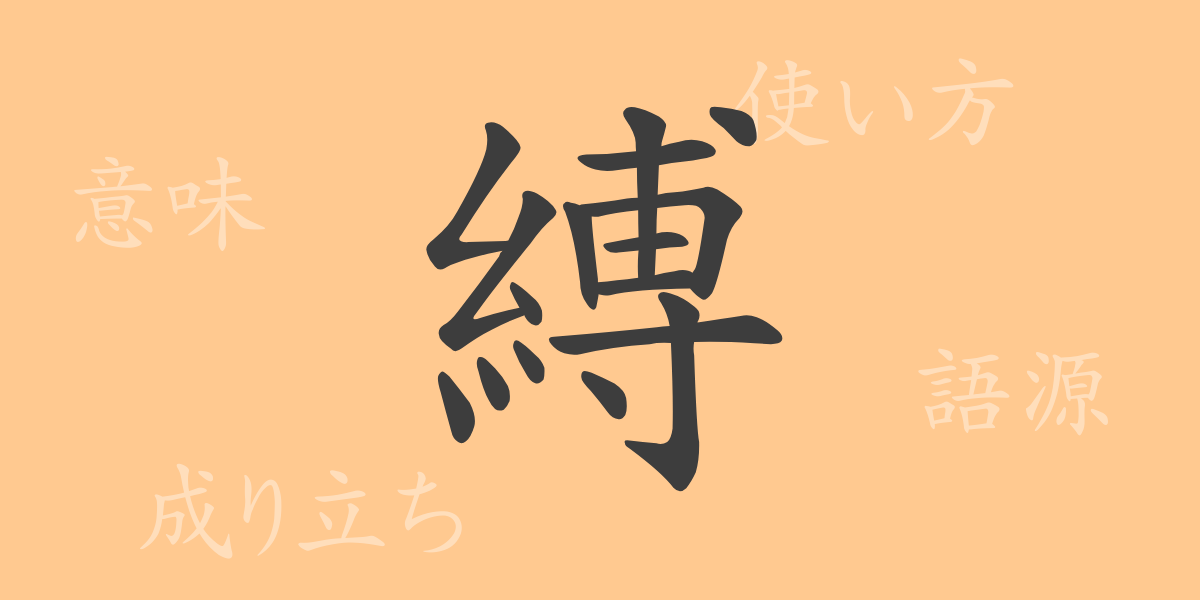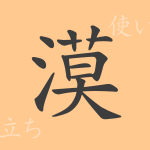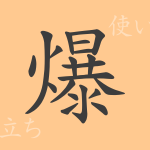In Japanese culture, each kanji character carries rich meanings and history that reflect the depth of the language and culture. Among the commonly used kanji, *“縛”* (*shibaru*, to bind) evokes the image of binding something together, but its usage spans a wide range of contexts, from literal restraints to metaphorical expressions. This article delves into the origins, meanings, and applications of *“縛”*, exploring its use in idioms and proverbs, and uncovering the full scope of this kanji’s role in the Japanese language.
The Origins of *“縛”* (Etymology)
The kanji *“縛”* originated in ancient China, symbolizing the act of binding threads to make ropes. Initially, it referred to the specific action of tying or bundling with thread or rope. Over time, the meaning expanded to encompass notions of restriction and the removal of freedom. The character came to represent both physical constraints and abstract concepts, such as restricting a person’s actions or thoughts. Today, *“縛”* is used in various contexts, signifying both tangible and intangible forms of restraint.
Meanings and Uses of *“縛”*
The primary meaning of *“縛”* is *“shibaru”* (to bind), referring to the physical act of tying something together. However, the term also extends to represent mental and social constraints. For instance, phrases like *“心を縛る”* (*kokoro o shibaru*, to bind the heart) or *“ルールに縛られる”* (*ruuru ni shibarareru*, to be bound by rules) illustrate how *“縛”* can express not just physical but also psychological and social restrictions. Thus, *“縛”* is a kanji with broad applicability, covering both direct and indirect forms of constraint.
Reading, Stroke Count, and Radical of *“縛”*
The kanji *“縛”* has the following readings, stroke count, and radical:
- Readings: On’yomi (Chinese reading) – *“バク”* (*baku*), Kun’yomi (Japanese reading) – *“しばる”* (*shibaru*)
- Stroke Count: 16 strokes
- Radical: *糸* (ito, thread radical), indicating its relation to threads or binding
Idioms, Sayings, and Proverbs Using *“縛”*
Here are some idioms, sayings, and proverbs that incorporate the kanji *“縛”*:
- *手縛り足縛り* (*teshibari ashishibari*): Refers to being bound hand and foot, metaphorically indicating a state of complete restriction or loss of freedom.
- *心縛* (*shinbaku*): Denotes being mentally restrained, where free thought or action is limited.
- *金縛り* (*kanashibari*): Describes a phenomenon where the body is paralyzed during sleep, or metaphorically, being frozen with fear.
- *言葉の縛り* (*kotoba no shibari*): Refers to the restriction of speech or expression, often bound by specific rules or norms.
Conclusion: The Significance of *“縛”*
The kanji *“縛”*, as its form suggests, embodies the fundamental idea of binding. Beyond its literal sense, it extends to encompass psychological and societal restrictions. The idioms and proverbs featuring *“縛”* reflect various constraints in human psychology and social life, showcasing the richness of the Japanese language. Encountering this character in everyday life reveals aspects of our lives and culture, highlighting the intrinsic links between language and our lived experiences.

























